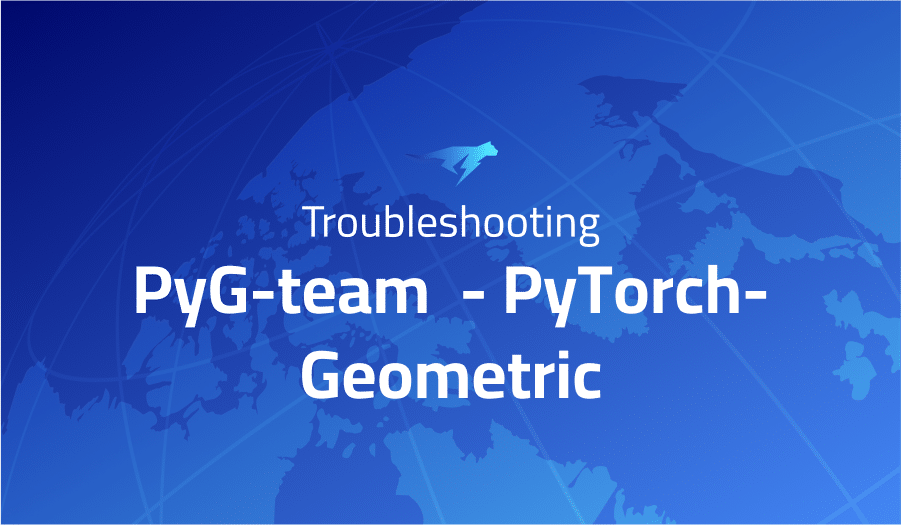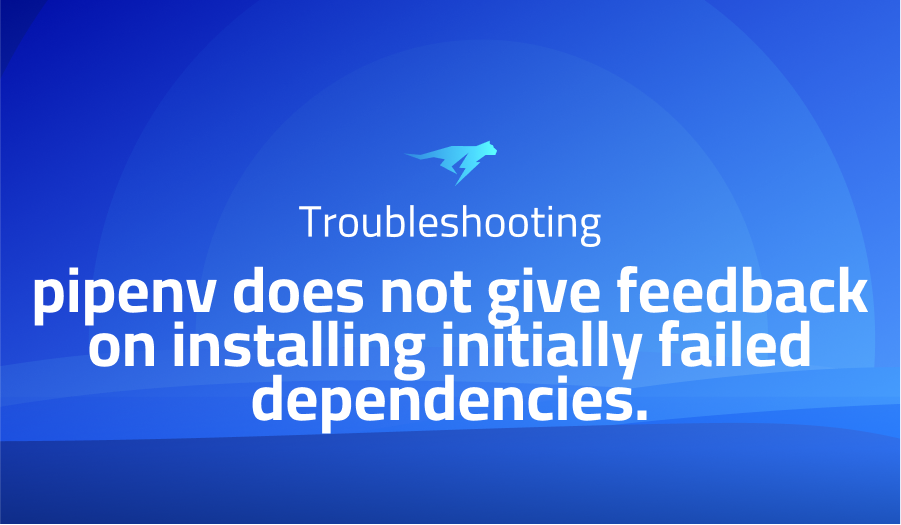

Troubleshooting common issues in PyG-team PyTorch-Geometric
Project Description
PyTorch-Geometric (PyG) is a library for deep learning on graph-structured data, built on top of the PyTorch deep learning framework. PyG is developed and maintained by the PyG-Team, a group of researchers and developers interested in deep learning on graphs.
It provides a range of tools and functions for working with graph-structured data, including functions for constructing, manipulating, and analyzing graphs, as well as functions for implementing and training deep learning models on graph data. It also includes a large number of pre-defined models and datasets for tasks such as node classification, graph classification, and link prediction.
PyG is designed to be easy to use and highly extensible, allowing users to easily implement and experiment with their own models and techniques for working with graph data. It is a popular choice for researchers and practitioners working on graph-based problems in a variety of fields, including natural language processing, computer vision, and chemistry.
Troubleshooting PyG-team PyTorch-Geometric with the Lightrun Developer Observability Platform
Lightrun is a Developer Observability Platform, allowing developers to add telemetry to live applications in real-time, on-demand, and right from the IDE.
- Instantly add logs to, set metrics in, and take snapshots of live applications
- Insights delivered straight to your IDE or CLI
- Works where you do: dev, QA, staging, CI/CD, and production
Start for free today
The following issues are the most popular issues regarding this project:
PyTorch Geometric is a powerful library that enables users to explore the fascinating realm of deep learning in relation to geometric data. PyG provides an abundance of popular graph neural network methods, as well as access to built-in datasets and custom user options for further experimentation.
To maintain PyG’s compatibility, installing an older version of torch-spline-conv is the only viable solution currently. Alternatively, one may choose to forgo its installation altogether as it does not impose a requirement on functioning properly.
OSError: libcusparse.so.11: cannot open shared object file: No such file or directory
Incorporate the power of GPU processing into your projects with PyTorch! Add its installed Minconda CUDA libraries to your $LD_LIBRARY_PATH environment variable. Then inspect the resulting path, ensuring it provides access to libcusparse.so.11 – an essential component for unleashing enhanced computing performance through GPUs in all sorts of exciting applications!
`OSError: [WinError 127] The specified procedure could not be found` when importing torch_geometric
It was a perplexing problem I encountered when utilizing torch version 1.11.0 to import datasets from torch_geometric, but thankfully it’s now solved!
from torch_geometric.datasets import TUDatasetSuccessfully resolving the issue, I uninstalled torch-geometric and its associated dependencies to put an end to my woes.
uninstall torch-geometric torch-scatter torch-sparse torch-cluster torch-spline-convUpon analyzing my Anaconda environment with ‘conda list’, I discovered that multiple versions of the necessary packages were installed. This caused a problem as torch-geometric had been set up with CUDA support, although no GPU was present in this configuration. Installing the CPU version did not remedy this issue, and it soon became clear that removing all Torch Geometric dependencies would be essential for resolving it; to determine compatible package versions accordingly, I consulted PyG Documentation.
After scrupulously perusing the documentation, I was able to execute a command that yielded desired results.
pip install torch-scatter torch-sparse torch-cluster torch-spline-conv torch-geometric -f https://data.pyg.org/whl/torch-1.11.0+cpu.htmlThe versions of dependencies installed were:
torch-geometric 2.0.4 torch-cluster 1.6.0 torch-scatter 2.0.9 torch-sparse 0.6.13 torch-spline-conv 1.2.1
It’s Really not that Complicated.
You can actually understand what’s going on inside your live applications.





